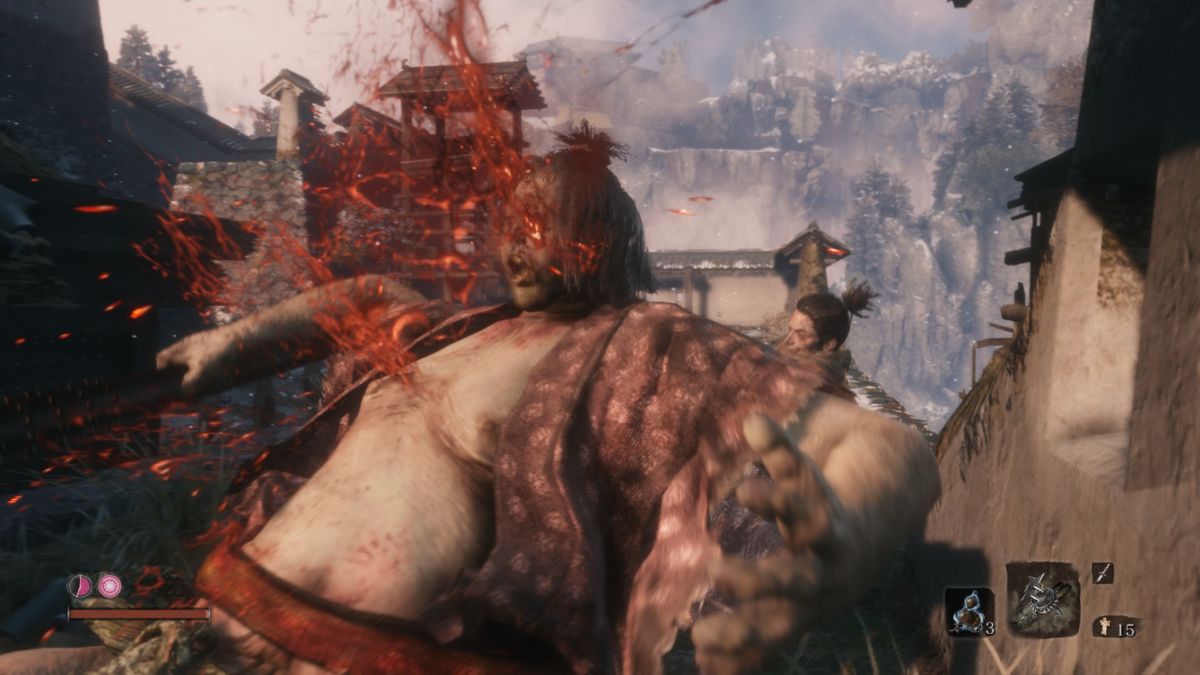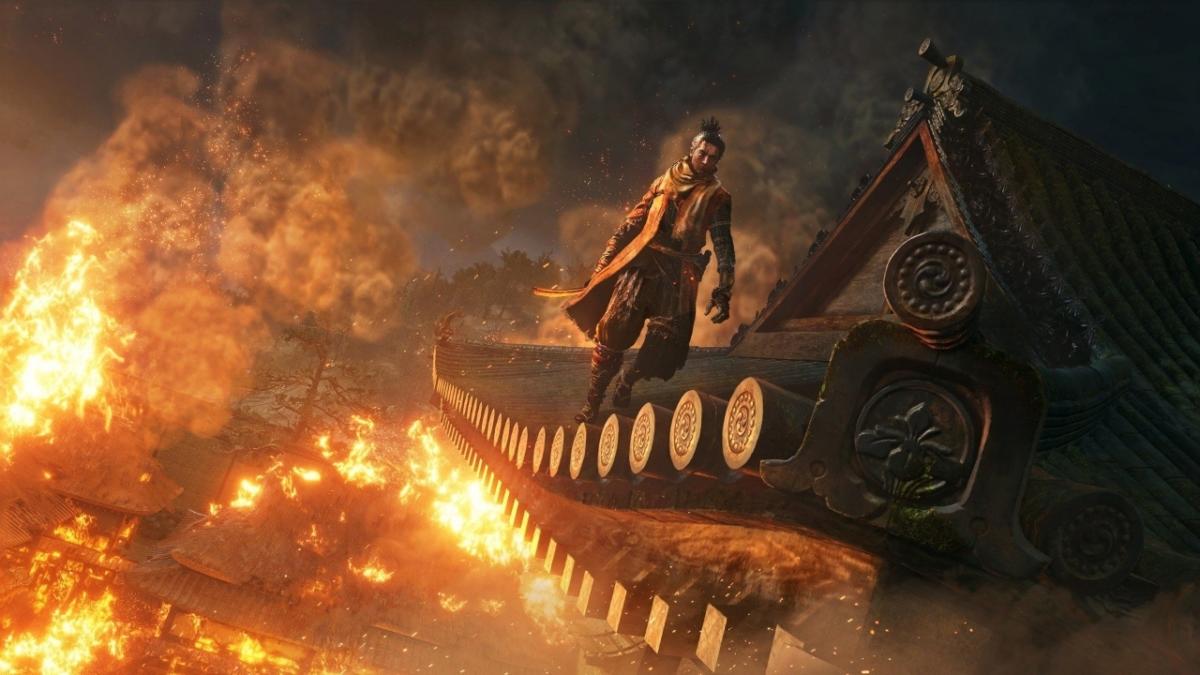It’s not a new or bold opinion to say that Sekiro: Shadows Die Twice is a different kind of difficult than FromSoftware’s seminal fantasy epic Dark Souls. However, it’s an important distinction to recognise when it creates such a jarring change of pace that even FromSoft veterans are struggling to cope with.
In particular, Sekiro has a huge change in design ethos that really sets it apart from its gothic older brother. Dark Souls wants you to learn about its enemies and their world, putting a shield or some distance between you and an enemy is a tried and tested way to weed out their attack patterns and find that crucial gap in their defense for you to gain an inch. Sekiro wants you to learn, but not passively through observation and defence. You’re expected to go in swords swinging and put the pressure on for a change, all the while flowing from strategy to strategy in between enemies and areas.
This is a game that’s more fluid than Dark Souls but doesn’t compromise on difficulty, instead choosing to be difficult by never letting you settle on one mechanic to use throughout the game. After the confidence boost of finally working out how to take down deflection-based boss Jinsuke Saze, it took me seventeen attempts to finally get a second deathblow on Lord Genichiro, and then another nine to actually finish the fight. The final attempt was an incredible bout of counters, dodges and attacks that sold Sekiro for me as the new king of Soulsbornes and Soulslikes. This is also where the game opens up and presents you with a few different options to go forward, but with new skills and more experience to hand, I went back to the Hirata Estate to face an old foe again.
Lady Butterfly kicked my ass.

Six attempts later she was done for, this time after a string of counters upon counters and some extremely dignified laps around the boss arena. It was a fresh, invigorating experience and did absolutely nothing to prepare me for the Lone Shadow Longswordsman, who consistently surprised me with his unblockable attacks and short telegraphs, or the four monkeys of the Illusory Temple who each presented a different challenge to overcome.
There is a huge variety in enemy design in Sekiro, despite minimal visual differentiation (at least for the first few major areas). The primary tactic for dealing with any given enemy can vary and not being flexible in how you approach this can quickly end your Shinobi’s life. Going from intense and complex boss fights to any random swordsman can quickly throw you off balance if you’re not prepared for a change of mindset. Mass brawls with different enemy types can be overwhelming but pulling them off is more satisfying than similar fights in the other Soulsborne games.
Even traversal has a fantastic variety; you can get used to the rooftop sneaking of Ashina Castle only to be totally thrown by the gauntlet of gunfire in the Sunken Valley. The grappling hook allows for more movement laterally and vertically (in both directions) and even lends a hand in spicing up combat. The stealth system, although ancillary, functions well and allows for FromSoft to introduce new concepts like picking your fights, or even not fighting at all.

This variety and insistence on constantly providing a new challenge for you to surmount has already been divisive amongst the community due to the difficulty, but for me it’s kept me thinking about Sekiro while I’ve been unable to play. Even writing this, I’m thinking about how I’m going to take on Shikibu Toshikatsu Yamauchi or any of the other four mini-bosses who have already killed me a few times.
It’s also set to keep the game from becoming stale — I’m not sure how much of the game I have left but as it stands I’m excited to keep going right to the very end. Much like the original Dark Souls, I can see this becoming something I come back to complete on a regular basis.
After four Soulsborne games and countless Soulslikes, it’s refreshing to see this from FromSoftware. Sekiro is an excellent subversion of modern expectations by the studio and feels like a real call back to the fantastic work they’ve created before. It’s also a change of pace from the industry in general right now: there are bucket loads of fantastic games being released this year but it’s hard to ignore how many are sequels, homages or draw heavy influence from what’s already out there. It’s not to say that Sekiro isn’t exactly that – it does draw heavily from both Tenchu and Dark Souls – but it really tries to get you to play it differently from encounter to encounter.
It’s also really nice to be able to pause. More of that please.
MORE SEKIRO: How To Easily Beat the Chained Ogre | Best Skills & Prosthetics | Posture, Resurrection, Dragonrot & More
Some of the coverage you find on Cultured Vultures contains affiliate links, which provide us with small commissions based on purchases made from visiting our site. We cover gaming news, movie reviews, wrestling and much more.



